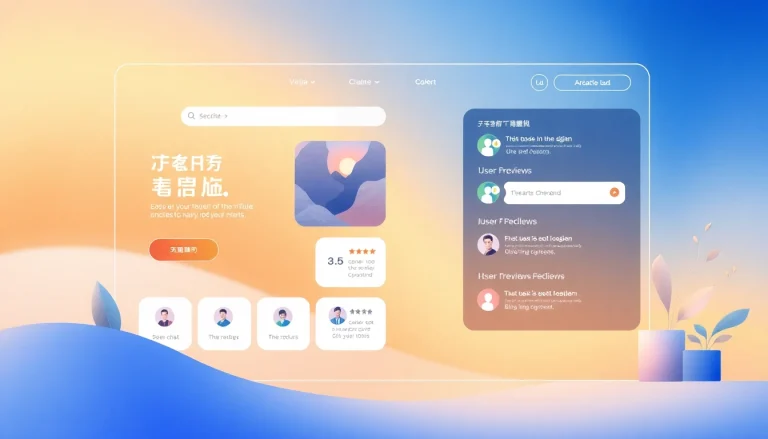Understanding Competitive Intelligence
In today’s fast-paced and ever-evolving business landscape, understanding your competitors is vital for success. Competitive intelligence (CI) refers to the process of systematically gathering and analyzing information about competitors, markets, and industry trends to aid in decision-making and strategy formulation. This pillar of business strategy equips organizations with the insights necessary to navigate the complexities of competition and enables businesses to position themselves advantageously within their respective sectors.
Definition and Importance of Competitive Intelligence
Competitive intelligence is not merely a reactive response to competitor actions; it is a proactive business strategy. Defined as the collection and analysis of actionable information regarding the competitive landscape, CI can encompass a range of data points, including market trends, competitor performance, and customer preferences. Understanding competitive intelligence is fundamental for organizations, especially as globalization and digital transformation intensify competition across industries.
The importance of competitive intelligence can be summarized in the following key areas:
- Informed Decision-Making: By having access to relevant data, organizations can make strategic decisions based on actual market dynamics rather than assumptions.
- Identifying Market Opportunities: CI enables businesses to spot trends before they become mainstream and to identify gaps in the market that they can exploit.
- Risk Management: Understanding the competitive landscape allows organizations to anticipate risks and mitigate them proactively, thereby reducing the likelihood of negative impacts on business performance.
- Performance Benchmarking: CI helps companies measure their performance in relation to competitors, allowing for effective benchmarking and goal setting.
Key Components of Competitive Intelligence
Competitive intelligence is multi-faceted, with its effectiveness relying on various components:
- Market Analysis: Understanding the overall market environment, including economic factors, industry regulations, and technological advancements.
- Competitor Analysis: Gathering information about competitors’ strengths, weaknesses, strategies, and product offerings.
- Customer Insights: Understanding customer preferences, behaviors, and feedback, which can influence product development and marketing strategies.
- Data Analytics: Utilizing data analysis tools and techniques to gain insights from collected information effectively.
Common Misconceptions About Competitive Intelligence
Despite its significance, many misconceptions surround competitive intelligence:
- CI is Just About Tracking Competitors: Many assume that CI is solely focused on understanding what competitors are doing. In reality, it encompasses a broader analysis, including market trends and consumer behavior.
- CI is Illegal or Unethical: While ethical considerations are paramount, gathering publicly accessible information is entirely legal and is a standard practice in business research.
- CI is Only for Large Organizations: Competitive intelligence is beneficial for businesses of all sizes, providing small and medium-sized enterprises (SMEs) with crucial insights that level the playing field.
Research Techniques for Gathering Intelligence
Primary vs. Secondary Research Methods
Gathering competitive intelligence involves both primary and secondary research methods:
- Primary Research:
- This method includes collecting original data through surveys, interviews, focus groups, and observations. Engaging with customers and industry experts can yield valuable insights that are not available through secondary sources.
- Secondary Research:
- Secondary research utilizes existing data that has been previously collected and published. Sources can include industry reports, market research studies, and public financial statements from competitors.
Leveraging Digital Tools for Data Collection
The advent of technology has transformed how businesses gather competitive intelligence. Digital tools offer efficient ways to collect, analyze, and disseminate information. Some popular digital tools and platforms that organizations can leverage include:
- Social Media Monitoring Tools: Platforms like Hootsuite and Sprout Social can help track competitors’ online activities and customer interactions.
- Web Analytics Tools: Google Analytics and similar tools provide insights into website traffic, user behavior, and conversion rates, which can help assess competitors’ online performance.
- SEO Tools: Tools such as SEMrush and Moz can unveil keywords competitors are targeting and their performance in search engine results.
Ethics in Competitive Intelligence Research
Ethical considerations in competitive intelligence cannot be overstated. The following principles can guide organizations:
- Legality: Ensure compliance with all regulations and laws regarding data collection and use.
- Transparency: Be clear about the sources and methods of intelligence gathering.
- Respect Confidentiality: Avoid using deception or misleading practices to gather information.
- Value Contribution: Collect and analyze information that provides genuine value for your organization rather than simply reacting to competitor actions.
Analyzing and Interpreting Data
Methods for Data Analysis
Once data is collected, it’s essential to employ effective analysis methods. Key approaches include:
- SWOT Analysis: This tool helps identify strengths, weaknesses, opportunities, and threats related to competitors and market conditions.
- Comparative Analysis: Directly comparing your company’s performance with competitors to identify areas of strength and weakness.
- Trend Analysis: Reviewing historical data to identify patterns, enabling predictions about future market behaviors.
Turning Analysis into Actionable Strategies
Data analysis must translate into actionable strategies. The process involves:
- Identifying Goals: Establish what you want to achieve through competitive intelligence—whether it’s improving product features, targeting new customer segments, or enhancing service quality.
- Developing Strategies: Use insights gained from analysis to develop robust strategies that address specific business goals.
- Implementation: Activate strategies through coherent marketing and operational plans, ensuring all teams understand their roles.
Evaluating Competitive Position Through Benchmarking
Benchmarking is a critical process that allows organizations to evaluate their competitive position. This involves:
- Selecting Benchmarking Partners: Choose competitors or industry leaders that represent the standard you wish to achieve.
- Data Collection: Gather relevant performance metrics and practices from your benchmarking partners.
- Analyzing Performance: Identify gaps in performance while recognizing areas where your organization excels.
- Adjusting Strategies: Utilize insights from benchmarking to drive continuous improvement in your own practices and strategies.
Implementing Competitive Intelligence in Business Strategy
Creating a Competitive Intelligence Framework
A solid competitive intelligence framework is critical to successfully embedding CI into your business strategy. This framework should include:
- Defining Objectives: Establish your organization’s goals and what intelligence needs to be gathered to meet them.
- Roles and Responsibilities: Assign roles for gathering, analyzing, and disseminating intelligence among team members.
- Resource Allocation: Ensure sufficient resources are committed to support ongoing CI activities, including finance, personnel, and technology.
Integrating Insights into Business Planning
Insights from competitive intelligence should seamlessly integrate into overall business planning. This involves:
- Marketing Strategies: Formulate marketing campaigns that take into account competitor positioning and customer preferences.
- Product Development: Use CI insights to enhance product features and services that meet market demands.
- Sales Strategies: Equip the sales team with intelligence about competitor offerings and customer sentiment for more effective selling.
Training Teams on Competitive Intelligence Best Practices
Effective implementation of competitive intelligence relies on well-trained teams. Organizations should invest in:
- Workshops: Conduct training sessions that teach employees about the CI process, including research methods and analysis techniques.
- Tools Training: Ensure that teams are proficient in using digital tools for data collection and analysis.
- Regular Updates: Provide ongoing information about market changes and competitor developments to keep the workforce engaged and informed.
Measuring the Impact of Competitive Intelligence
Key Performance Indicators for Competitive Intelligence
To evaluate the effectiveness of competitive intelligence initiatives, organizations should develop key performance indicators (KPIs), which may include:
- Market Share Growth: Measure changes in market share relative to competitors.
- Customer Satisfaction Scores: Track improvements in customer satisfaction and loyalty as a result of CI-driven strategies.
- Sales Growth: Monitor revenue changes linked to CI initiatives and strategic adjustments.
Case Studies: Successful Competitive Intelligence Implementation
Real-world examples illustrate the effectiveness of competitive intelligence. For instance:
- Case Study 1: A leading beverage company used competitive intelligence to analyze market trends and competitor strategies, allowing them to launch a successful new product that capitalized on health-conscious consumer behavior.
- Case Study 2: A technology firm implemented CI to streamline its product development process. By understanding competitors’ feature set, they were able to enhance their product line, leading to significant improvement in market positioning.
Continuous Improvement and Adaptation in Strategy
Competitive intelligence is not a one-time initiative but requires an adaptive approach. Organizations should:
- Regularly Review CI Processes: Continually assess and update data collection methods to ensure they remain relevant.
- Solicit Feedback: Engage teams to provide insights on what is working and what isn’t in CI practices.
- Embrace Agility: Be prepared to pivot strategies based on new insights or market changes to maintain a competitive edge.


















